Welcome back to PLV All-Stars, where we look at some high-performing players each month based on Pitcher List’s PLV data. Last month, we focused primarily on offense, so this month, we’ll flip the script and take a look at some hurlers who’ve excelled through the first two months of the 2024 season. Specifically, we’ll review the nastiest pitches in PLV terms season-to-date. To qualify, the pitcher must have thrown the pitch at least 100 times thus far this year. Let’s get to it!
Nastiest Four-Seamer: Shota Imanaga
Shota Imanaga has defied expectations in his first season in Chicago. The lefty from Japan has dominated with a 1.86 ERA and 1.01 WHIP through his first 10 starts. Those stellar numbers include his last outing, in which the Brewers lit him up for seven runs in four and one-third innings. Imanaga primarily relies on his four-seamer and splitter, occasionally dropping in a sweeper and curveball. The fastball is his bread-and-butter, though, and he relies on it extensively for good reason, as the opposition is hitting only .180 against it.
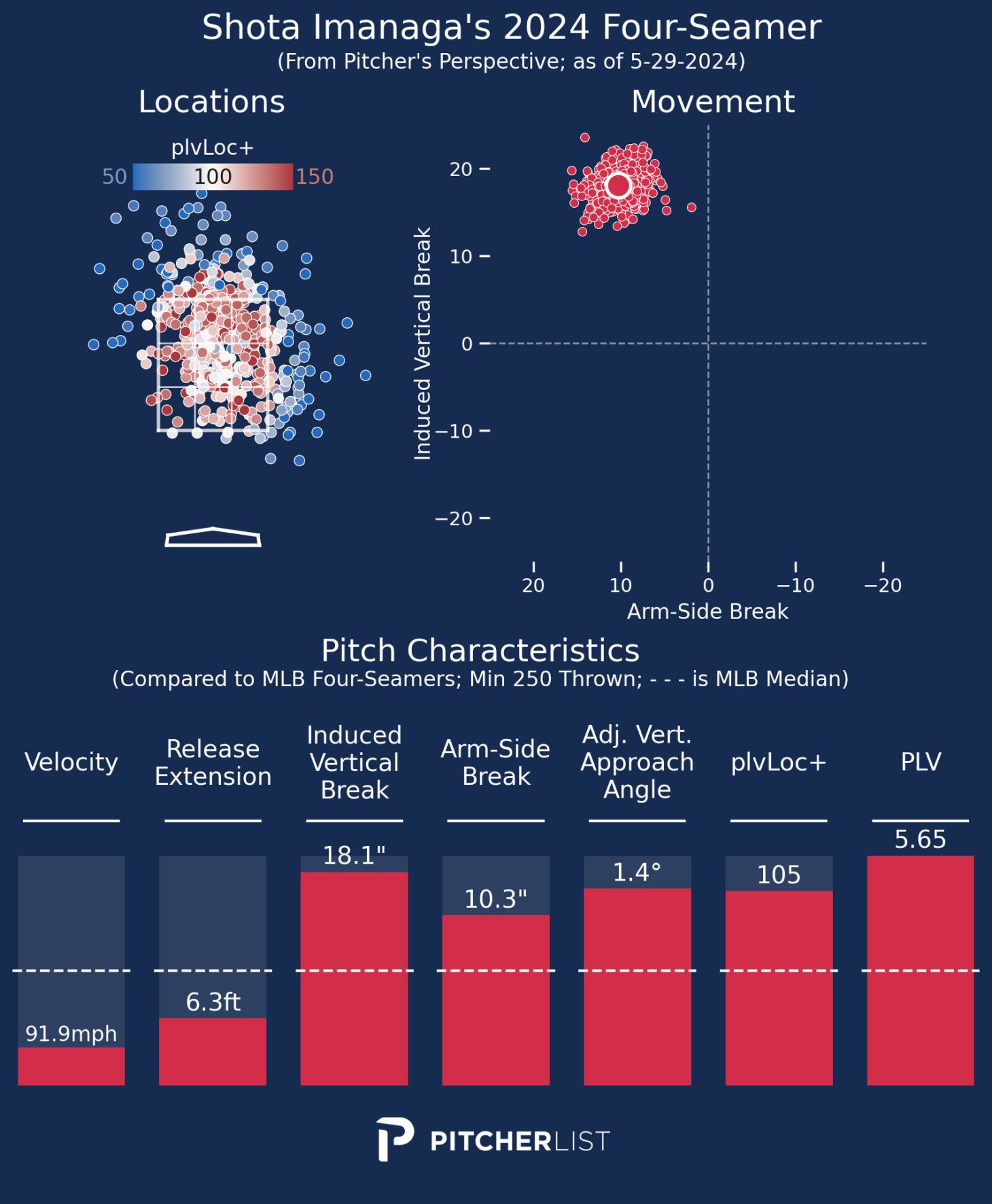
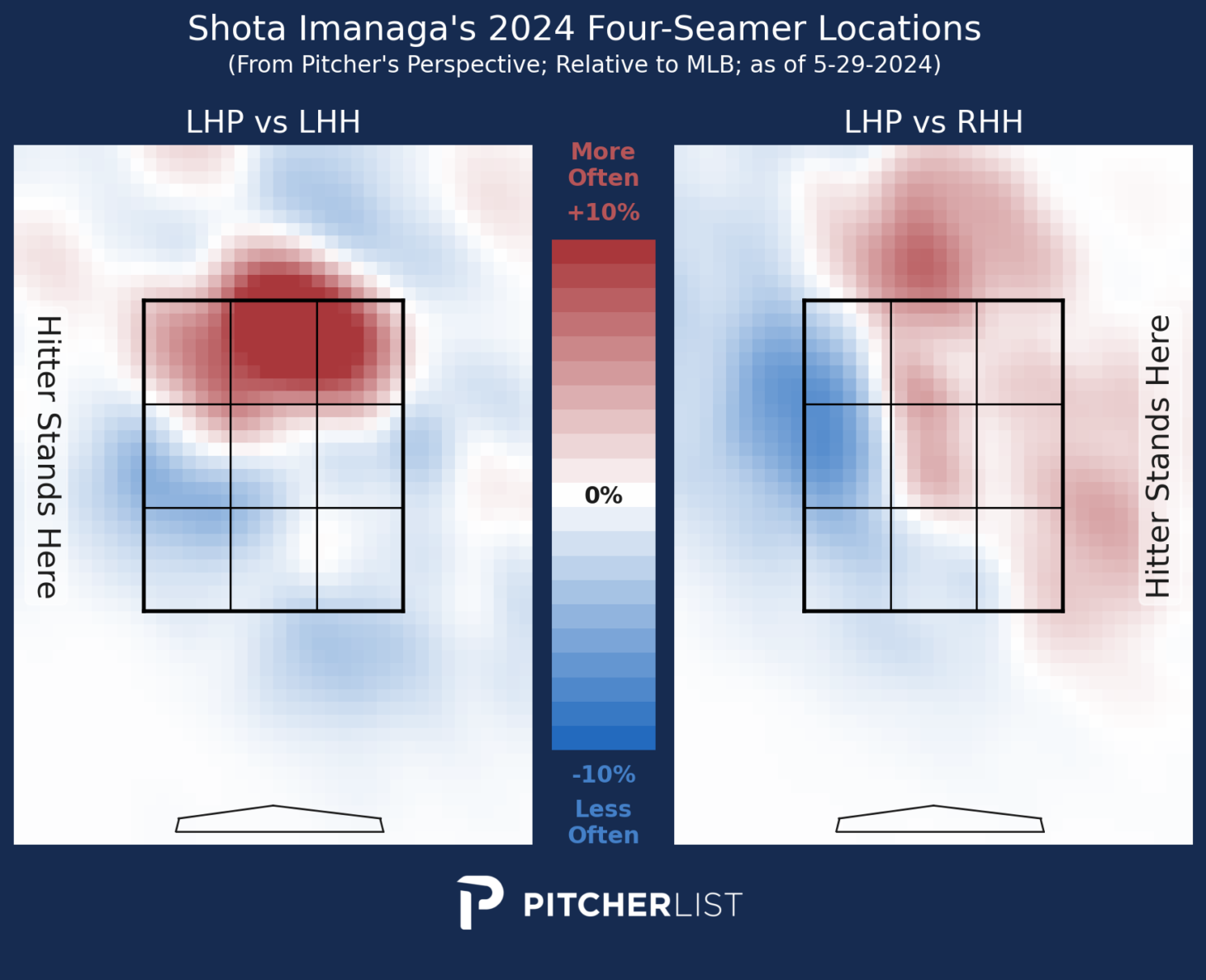
Imanaga doesn’t rely on velocity with his four-seamer, which clocks in well below the league average. It’s his movement, combined with a deceptive delivery, that is giving batters fits. Imanaga’s fastball rises with an arm-side break that hitters swing at 57% of the time, with poor results.
Nastiest Sinker: Tyler Rogers
Tyler Rogers abandoned his four-seamer in 2023 in favor of a sinker, which he rarely threw at the outset of his career. The sinker quickly became a cornerstone of his two-pitch arsenal, and he’s thrown it more than his slider this season. Rogers’ submariner delivery makes it difficult to pick up the pitch, which he controls exceptionally with a 65.1% Zone%.
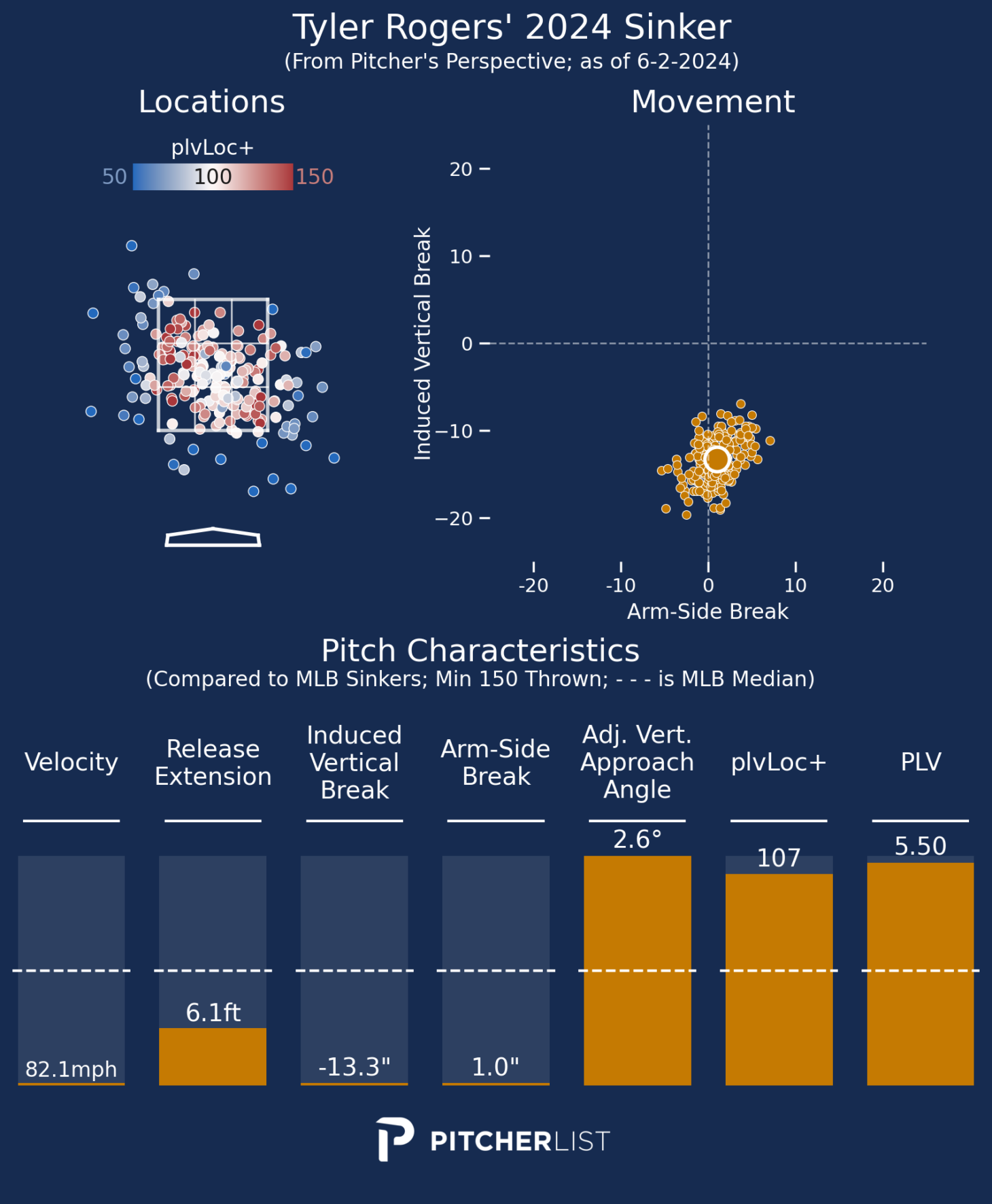

The sinker doesn’t move much horizontally, but as any good sinker should, it drops precipitously, inducing groundballs on 69% of his offerings. Batters want to hit it, swinging 61% of the time, but struggle to put it in play, as evidenced by a very high 26.2% Foul Str% (fouls / total pitches).
Nastiest Slider: Hunter Strickland
Hunter Strickland was out of the MLB for most of 2023 but has re-emerged with a vengeance for the Angels this season. The veteran has posted a 1.85 ERA this year for the Halos, primarily due to his excellent slider. Strickland’s slider spins with the best of them at 2.762 RPM, yet he controls it exceptionally well, throwing it for strikes over 72% of the time.
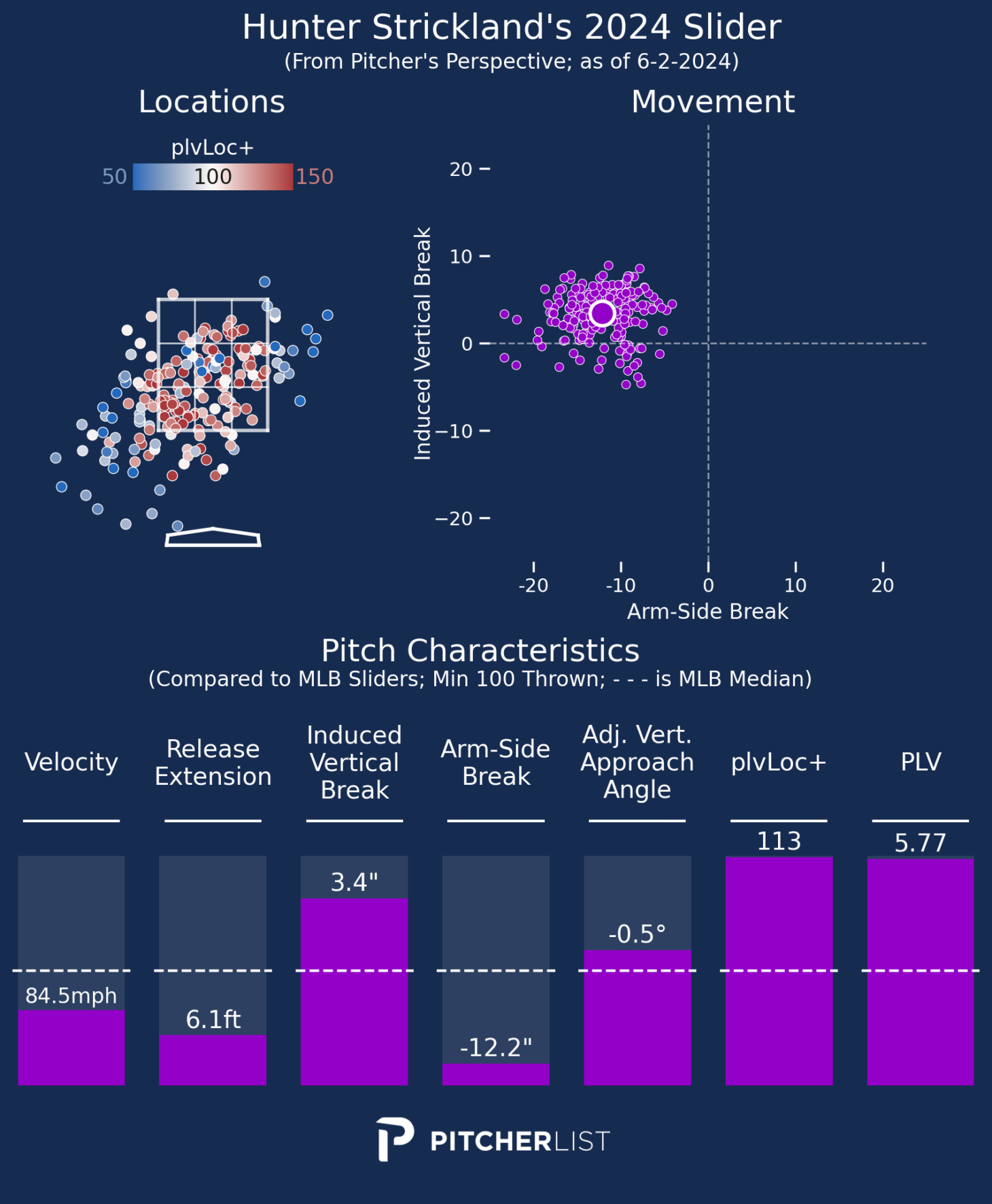

Strickland’s slider rises slightly and breaks away from righties dramatically. The movement compensates for well below-average velocity and has helped Strickland revitalize his career by holding batters to a .143 average on the pitch. Strickland could be appealing trade bait for a contender this summer, something the Angels surely didn’t envision when they took a chance on him this winter.
Nastiest Sweeper: Sonny Gray
Sonny Gray hasn’t missed a beat in his return to the NL, winning seven of his first 10 starts with the Cardinals behind a 3.00 ERA. Gray has a deep six-pitch arsenal, but the sweeper he learned last year in Minnesota has rapidly developed into a deadly pitch. Gray’s version is faster than most and he’s befuddling batters to the tune of a .138 average against it.
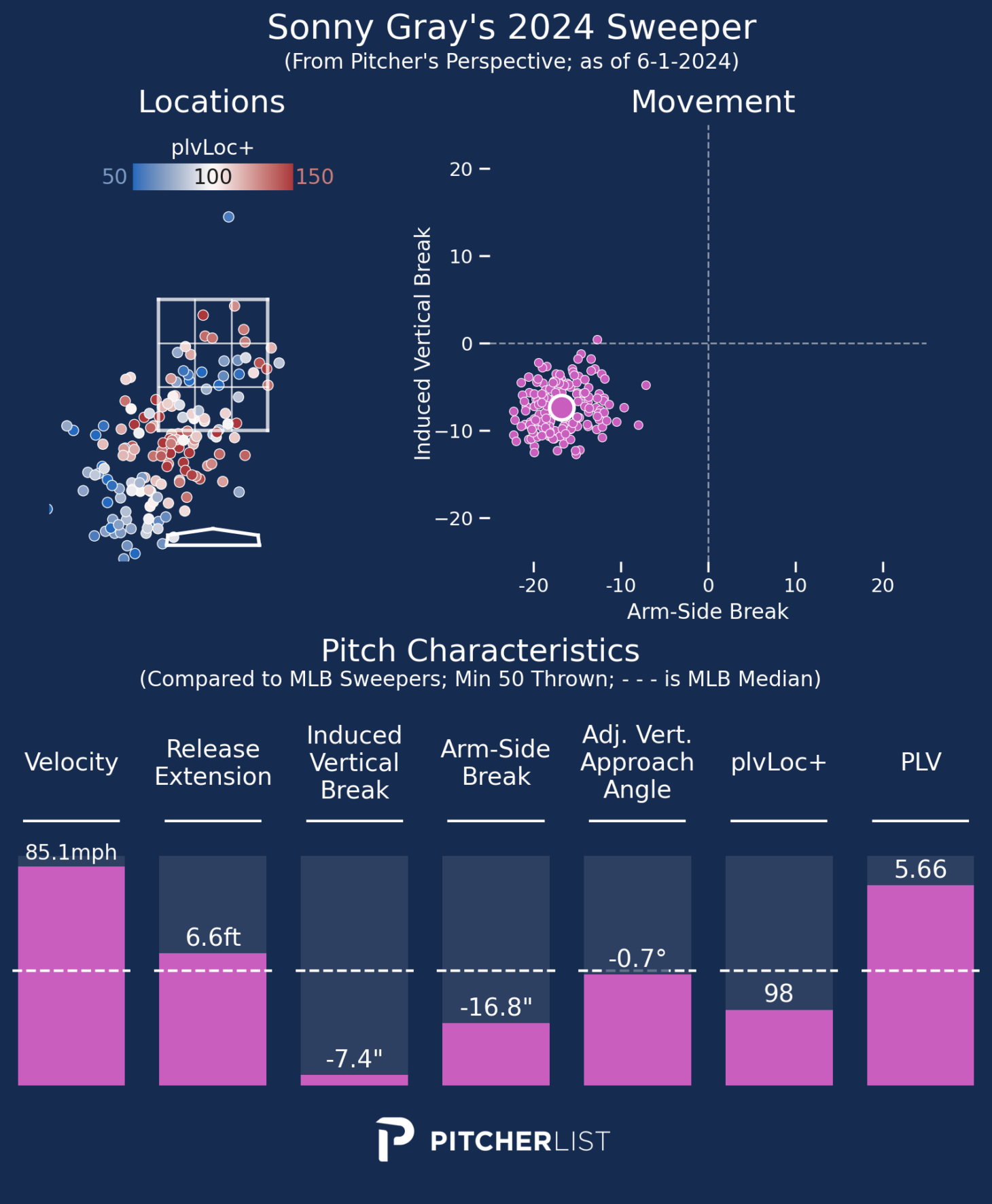
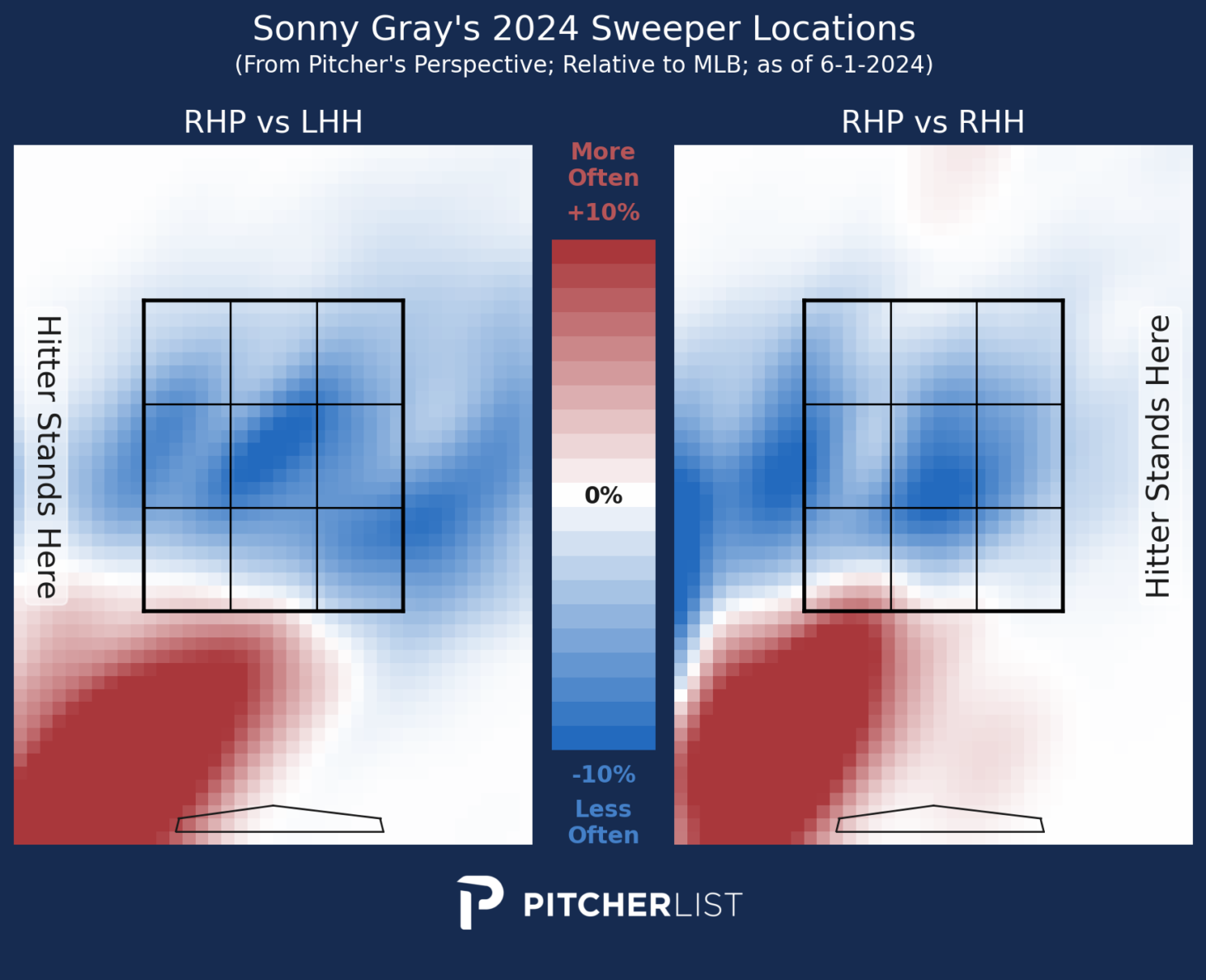
The sweeper breaks down and away against right-handed batters, who chase it out of the zone 45% of the time. They rarely make contact, whiffing nearly half the time they swing. This has led to an insane 25.5 SwStr% against the sweeper, in the 99th percentile among all pitchers. It’s become a put-away pitch for Gray, who employs it with two strikes 84% of the time.
Nastiest Changeup: Yennier Cano
Yennier Cano broke out last season for the Orioles and has continued to dominate hitters in 2024. He features four pitches, but his sinker and changeup are his bread and butter, and both are very effective. Cano’s changeup has been so dominant this year that it carries a negative PLA. It classifies as a PLV Quality Pitch a whopping 70.5% of the time and a Bad Pitch less than 19%, putting in the +95th percentile in both categories.
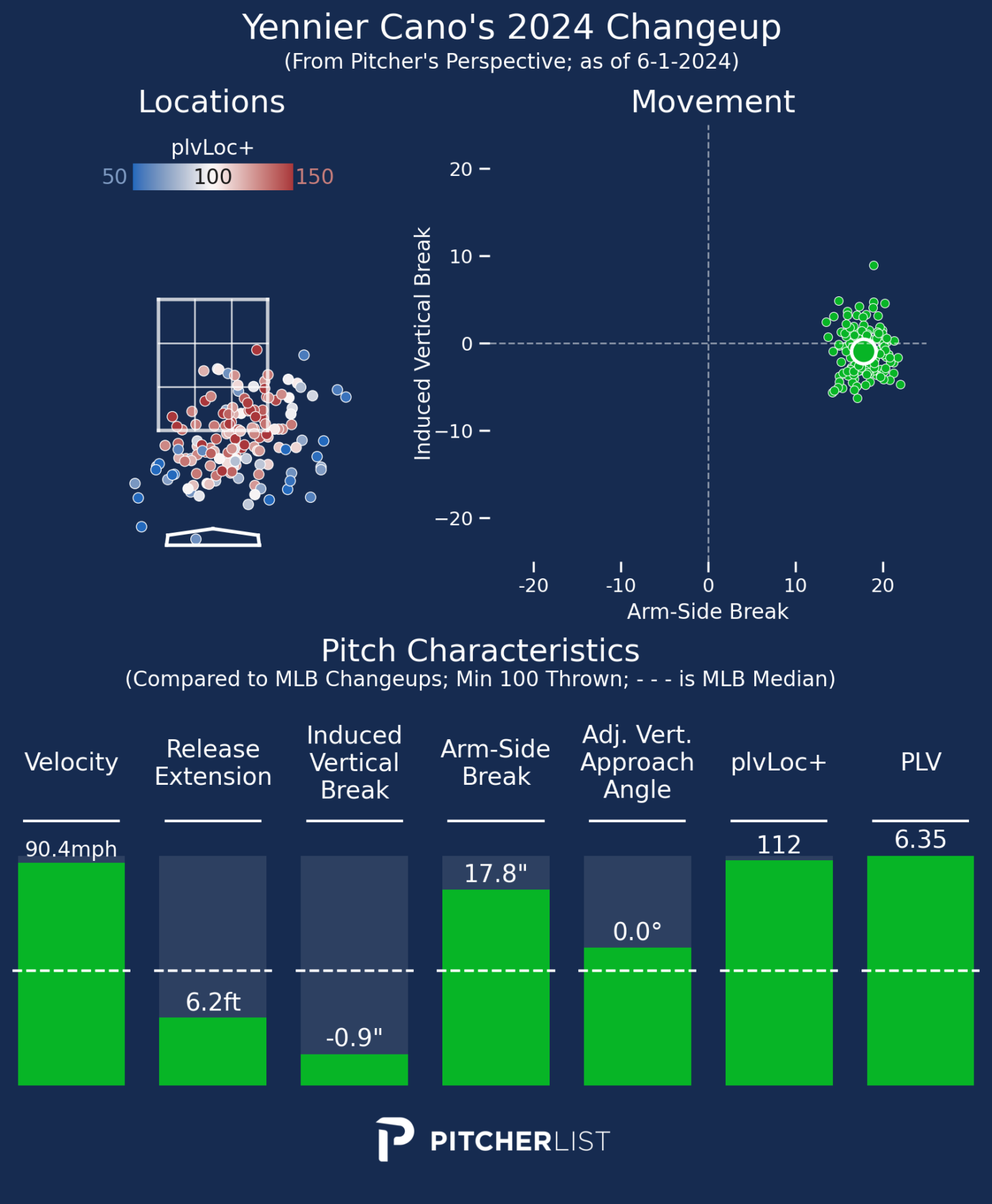
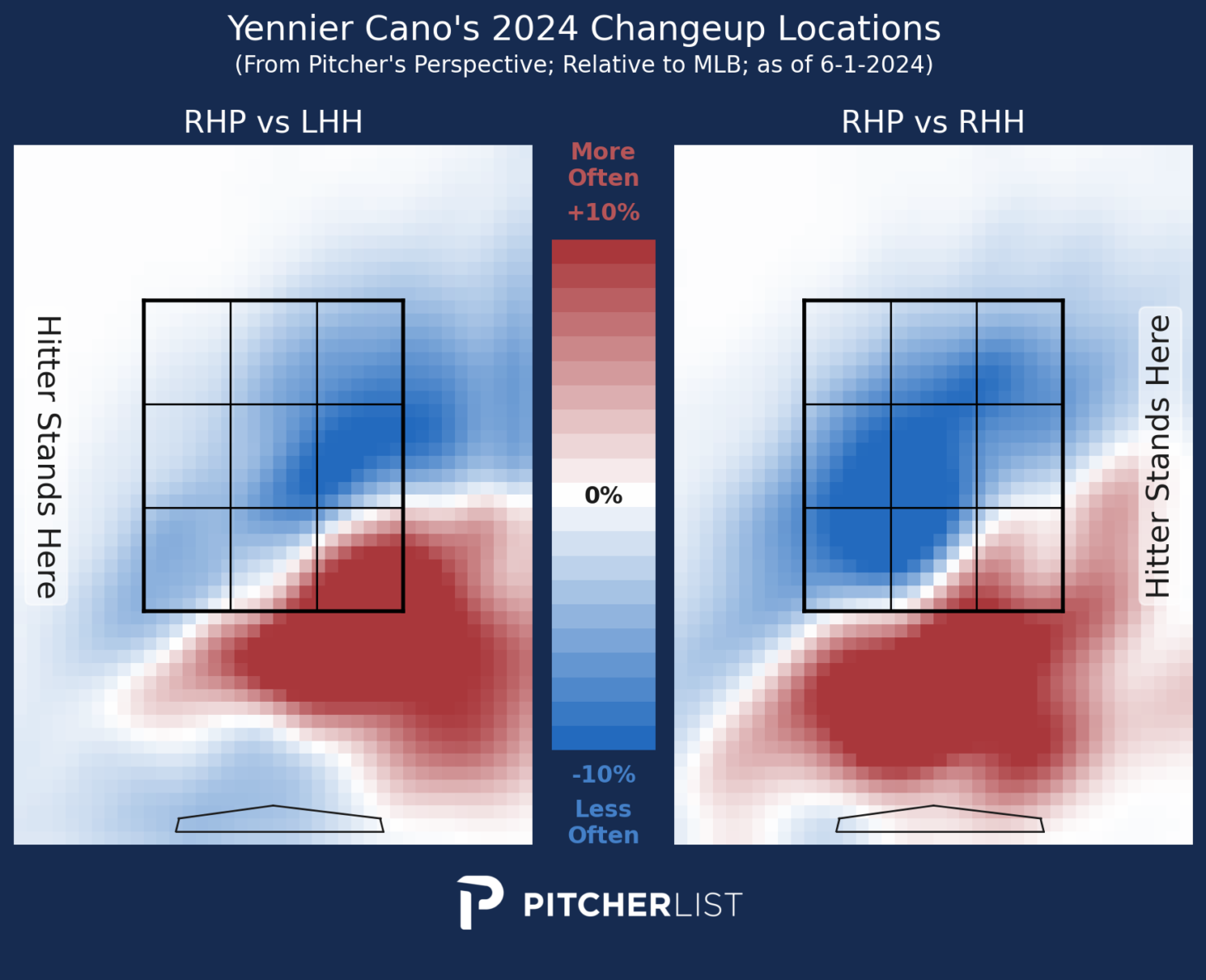
Cano’s changeup is unusually fast at over 90 mph and breaks in dramatically on right-handed hitters. He generates plenty of chase on the pitch, with an O-Sw% of 47.1, and batters struggle to make good contact, posting a 3.4% barrel rate. Cano isn’t a strikeout artist, but between the sinker and the changeup, he’s among the league leaders in generating ground balls.
Nastiest Curveball: Ryan Yarbrough
Ryan Yarbrough has been excellent out of the Dodgers’ pen this year, with a 2.82 ERA, 0.94 WHIP, and 5.34 total PLV. Yarbrough throws five pitches, none of them over 86 mph, and has thrived with his curveball. At 72 mph, Yarbrough’s curve is a tempting target, and batters offer at it 57% of the time. However, they are not finding much success, batting only .152 with a .207 wOBA against it.
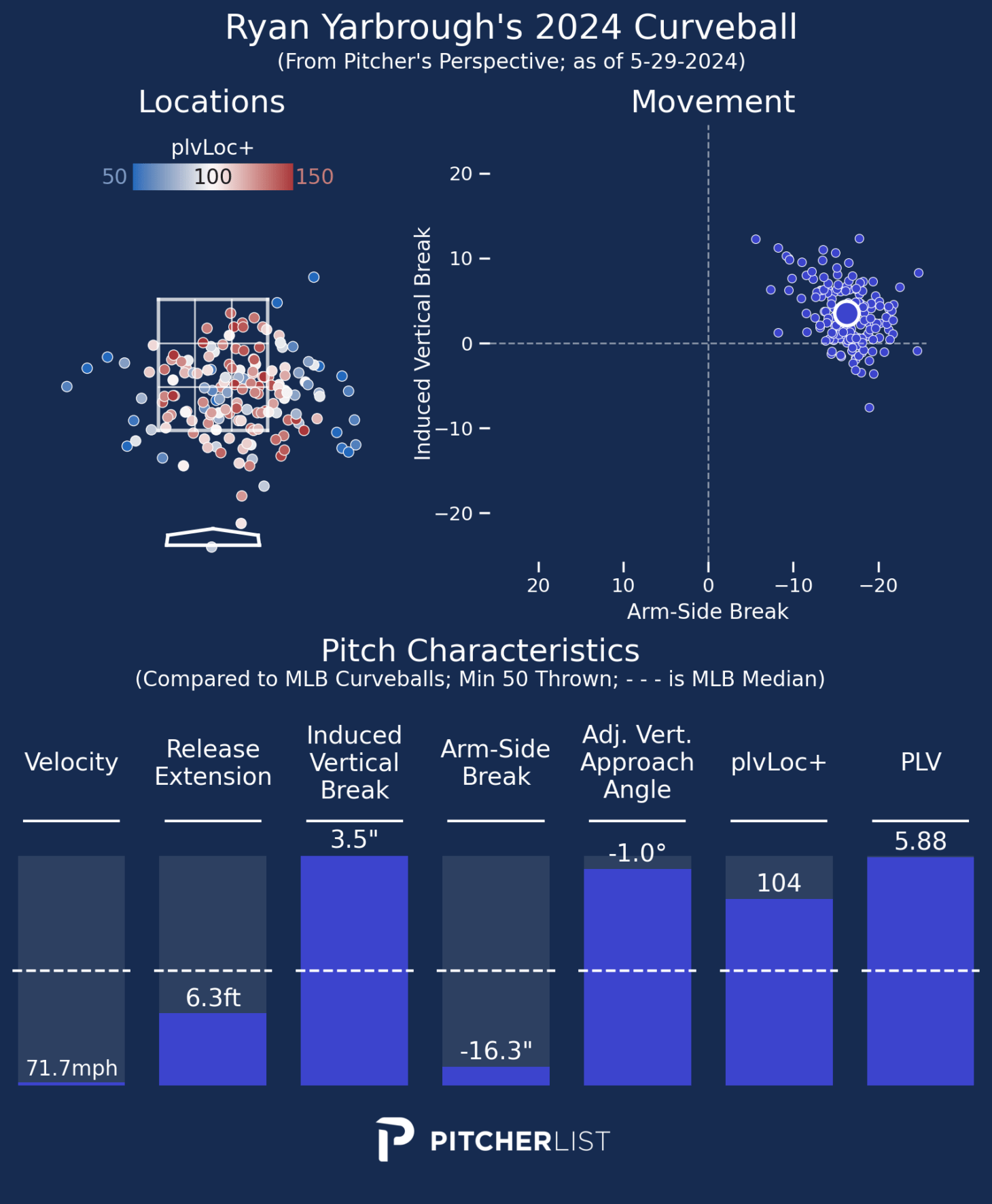
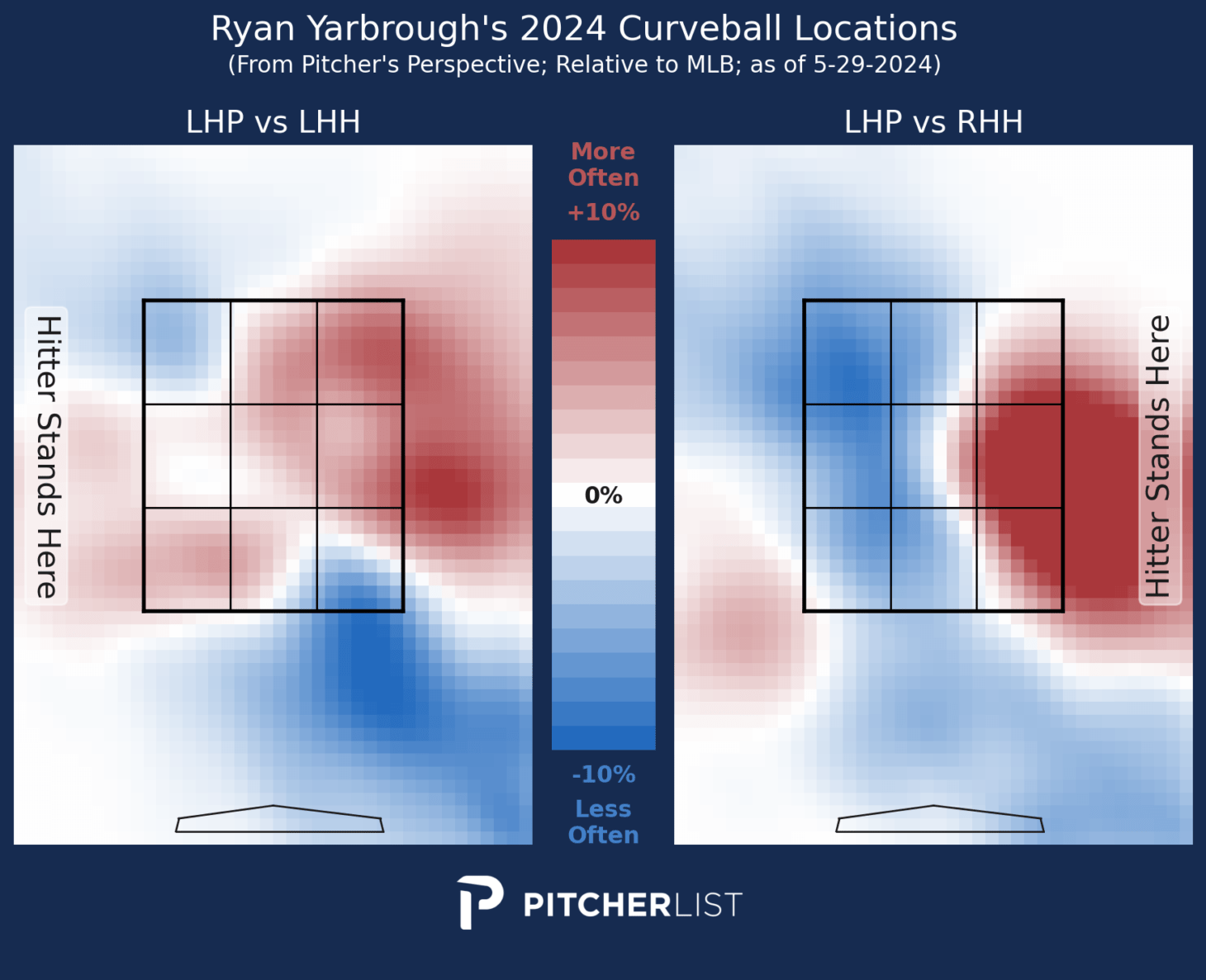
The lefty’s horizontal movement is spectacular, breaking in on righties and away from lefties. Yarbrough keeps it in the zone about half the time and generates plenty of chase with an O-Sw% of 39.3. Batters can punish his mistakes as they put the ball in the air at a 61% clip. But thus far this season, Yarbrough has done an excellent job of keeping those flyballs in the park, allowing only a 9.1% HR/FB ratio.
Nastiest Cutter: Paul Blackburn
Paul Blackburn hasn’t thrown a pitch since May 10 and won’t be back on the mound anytime soon due to a stress reaction in his foot. He still qualifies for our list, though, as he tossed 146 cutters in his eight starts this season. Blackburn’s cutter is by far the most effective of his six pitches in PLV terms, though you wouldn’t know by looking at his stats, as batters have a .316 average against it.

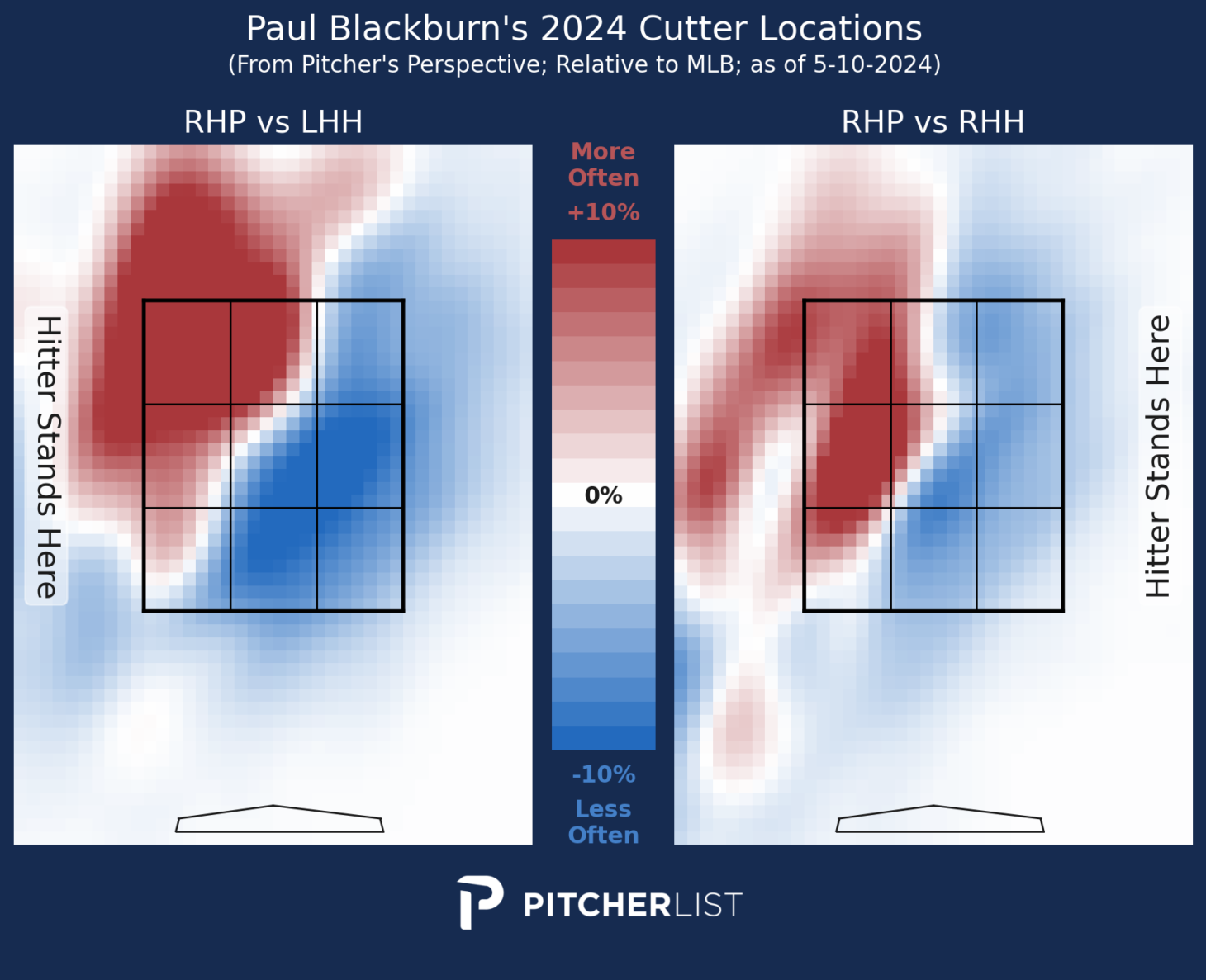
Blackburn’s cutter has excellent horizontal movement, moving away from right-handed hitters with a -2.1 xMov rate. Despite the movement, he keeps it in the zone over 58% of the time and tempts batters to swing at a 63% clip. His 17.1% SwStr rate on the cutter is in the 87th percentile, and it appears his lack of success this season is partly due to bad luck, evidenced by a .355 BABIP. Hopefully, Blackburn will be back on the mound sooner rather than later for the better-than-expected A’s.
Nastiest Splitter: Yoshinobu Yamamoto
We round out our All Stars this month with another rookie pitcher from Japan, Yoshinobu Yamamoto. Yamamoto entered the league with much fanfare and has not disappointed with a 3.32 ERA, 1.12 WHIP, 28.4% K%, and 5.2% BB% through 12 starts. The Dodgers’ hurler has six pitches in his arsenal but primarily relies on a four-seamer, curveball, and splitter. All of Yoshi’s pitches are effective, but none more so than his splitter.
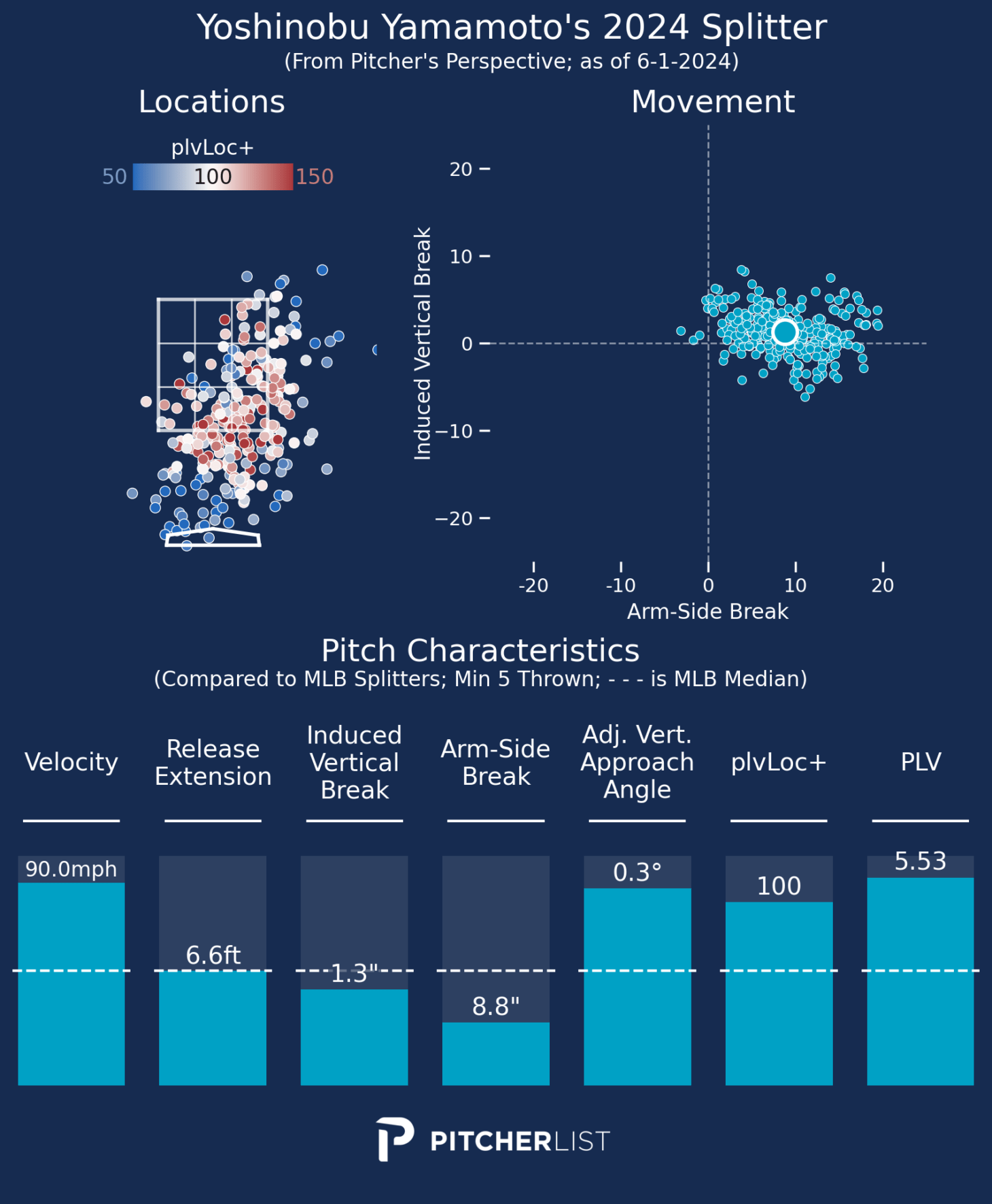
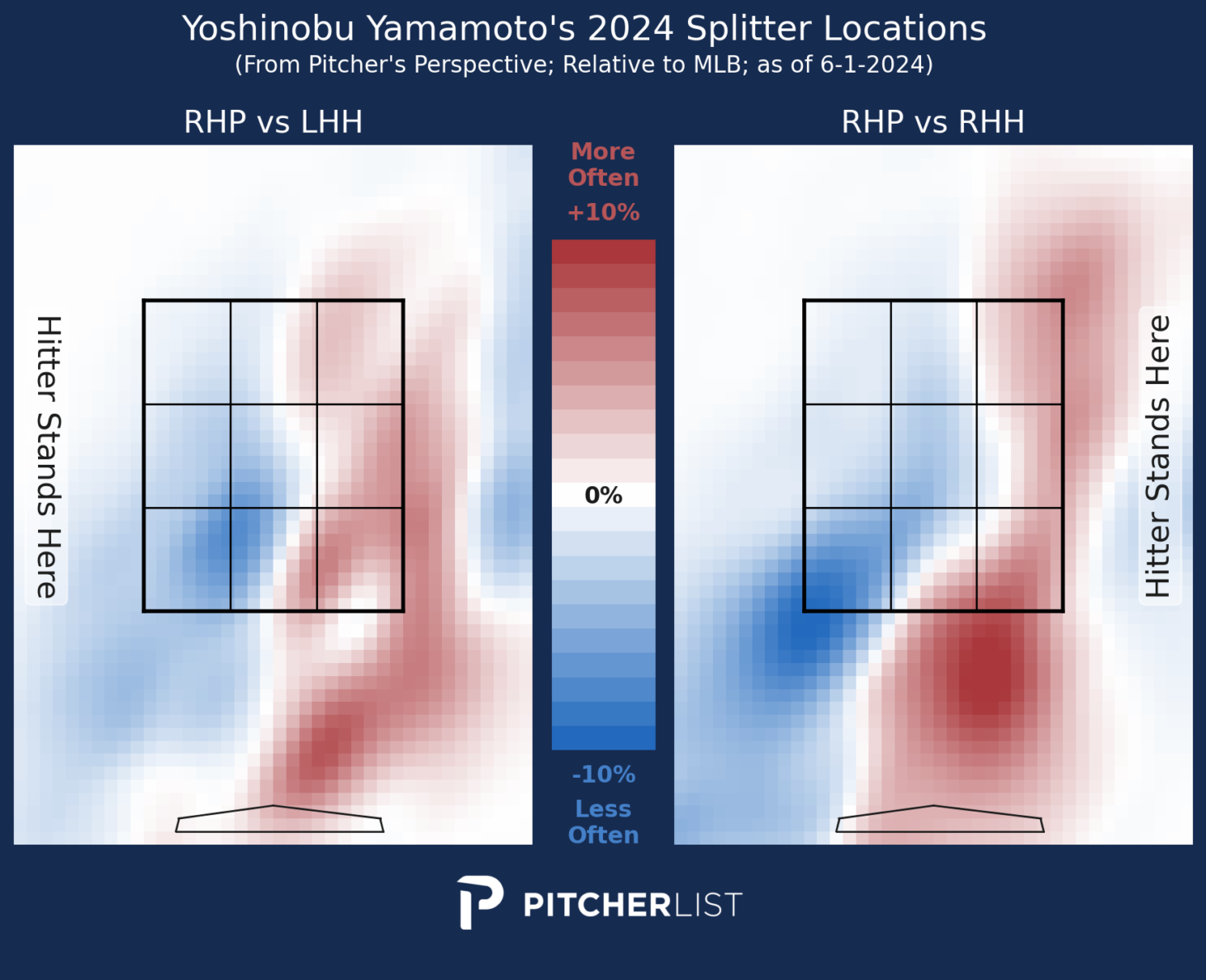
Yamamoto’s splitter only finds the strike zone about 29% of the time, yet generates a 62% strike rate thanks to a 55.8% Swing%. Batters swing at 44% of splitters thrown outside of the zone and make hard contact just 27% of the time. Yoshinobu’s splitter is fast at 90 mph and has a positive arm-side break, working in on righties and away on lefties. The results have been great, as opponents are hitting only .192 on the splitter with a .235 wOBA.
Photos courtesy of Icon Sportswire
Adapted by Kurt Wasemiller (@kurtwasemiller on Twitter / @kurt_player02 on Instagram)

